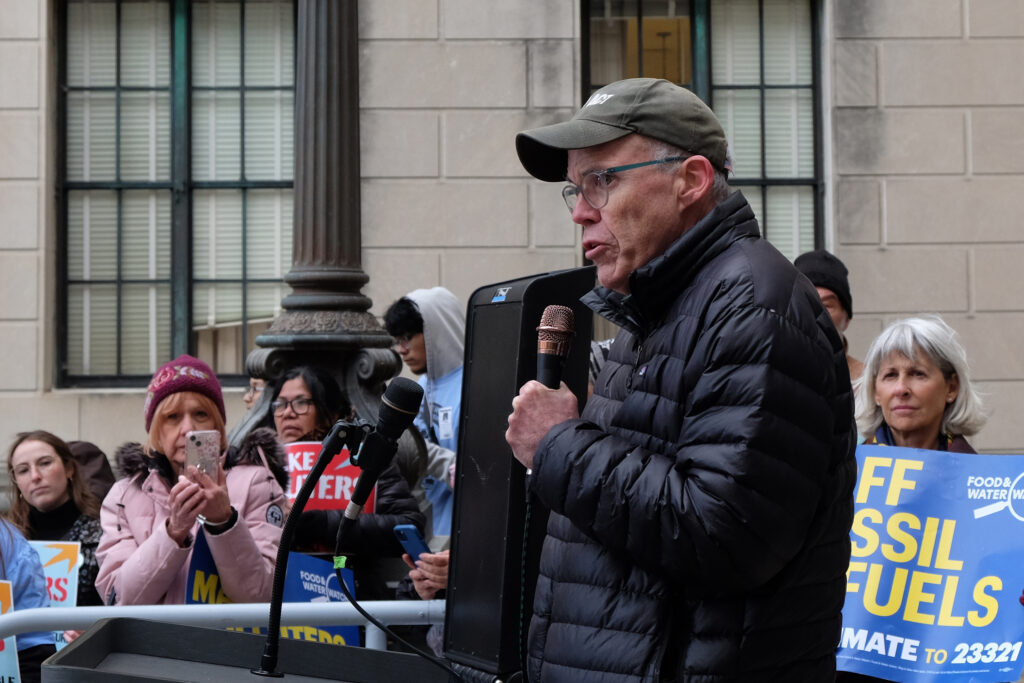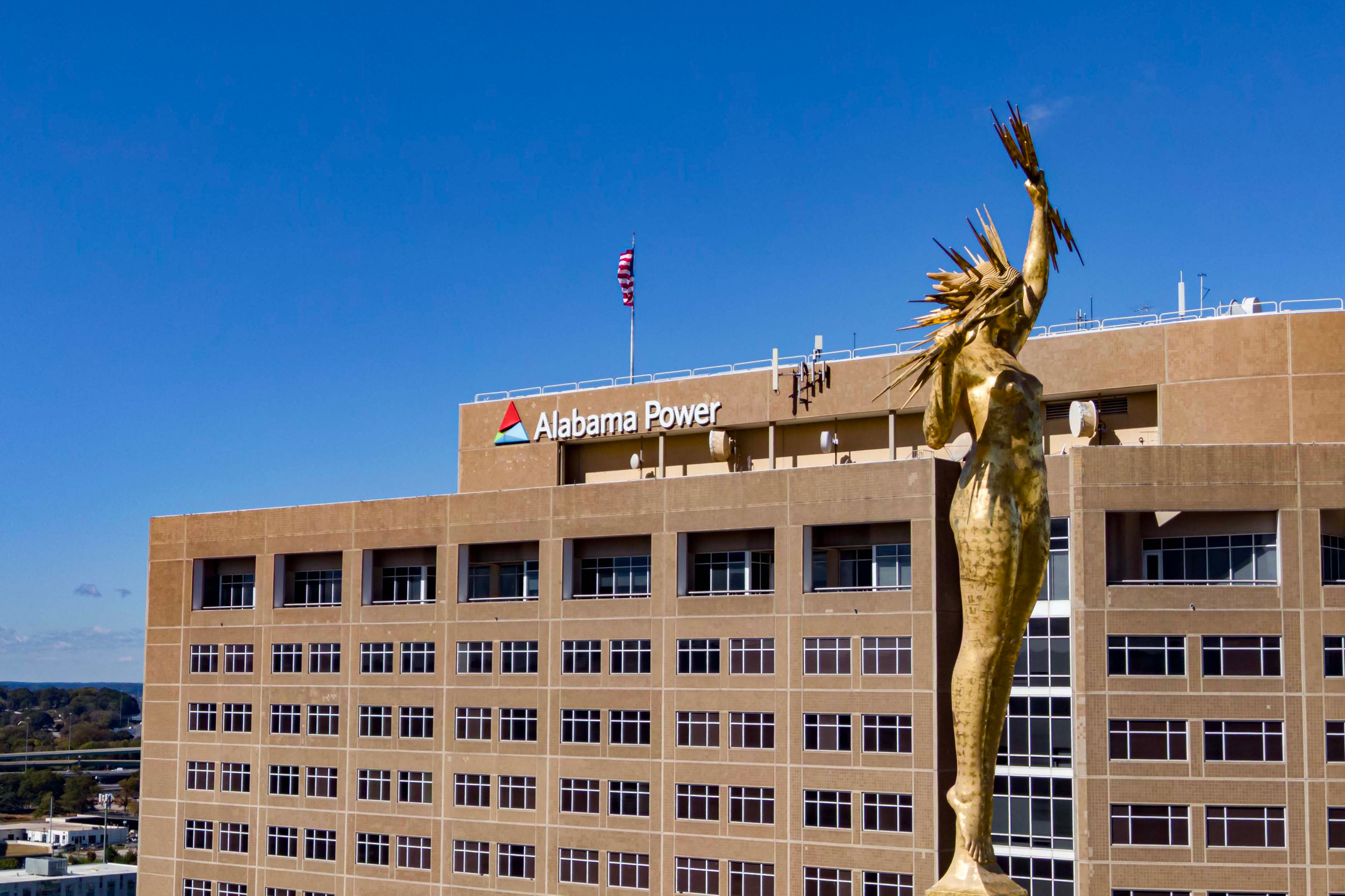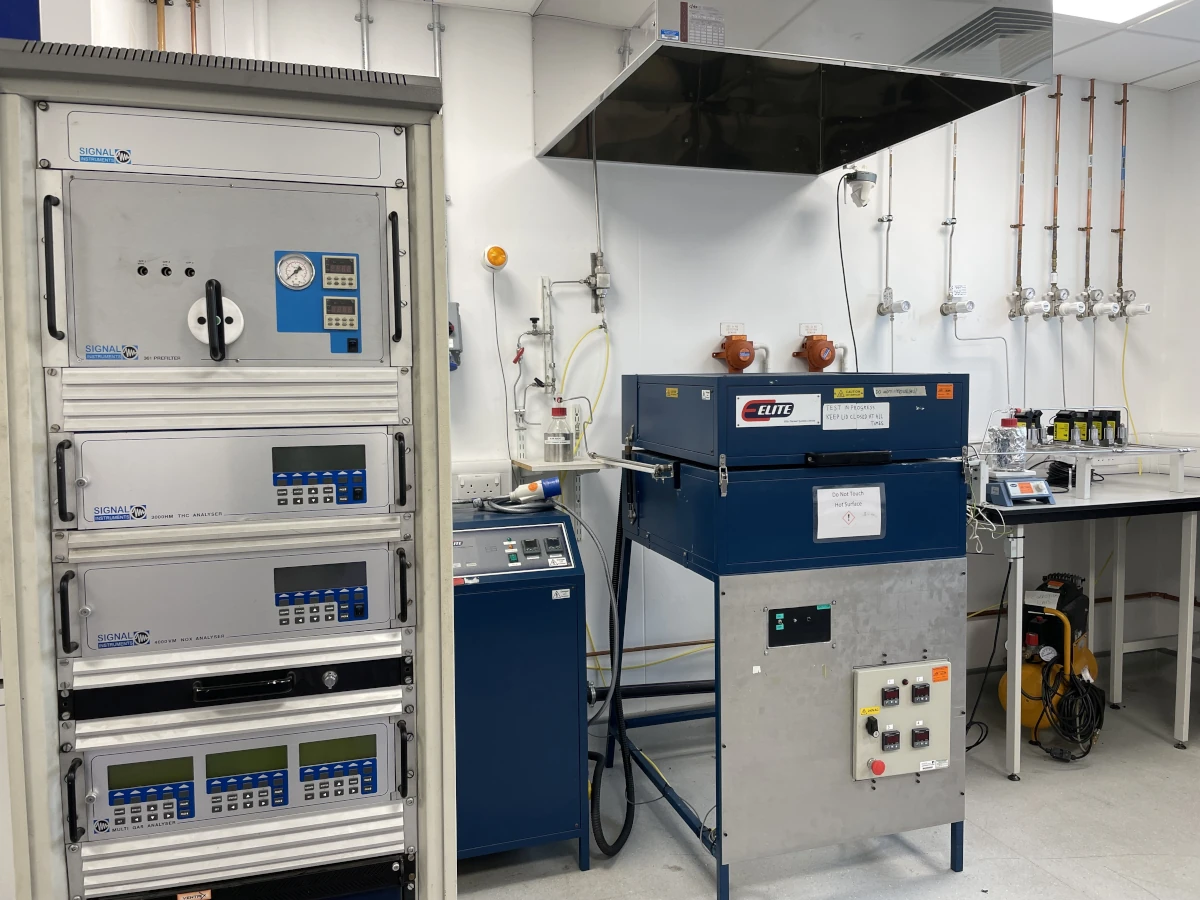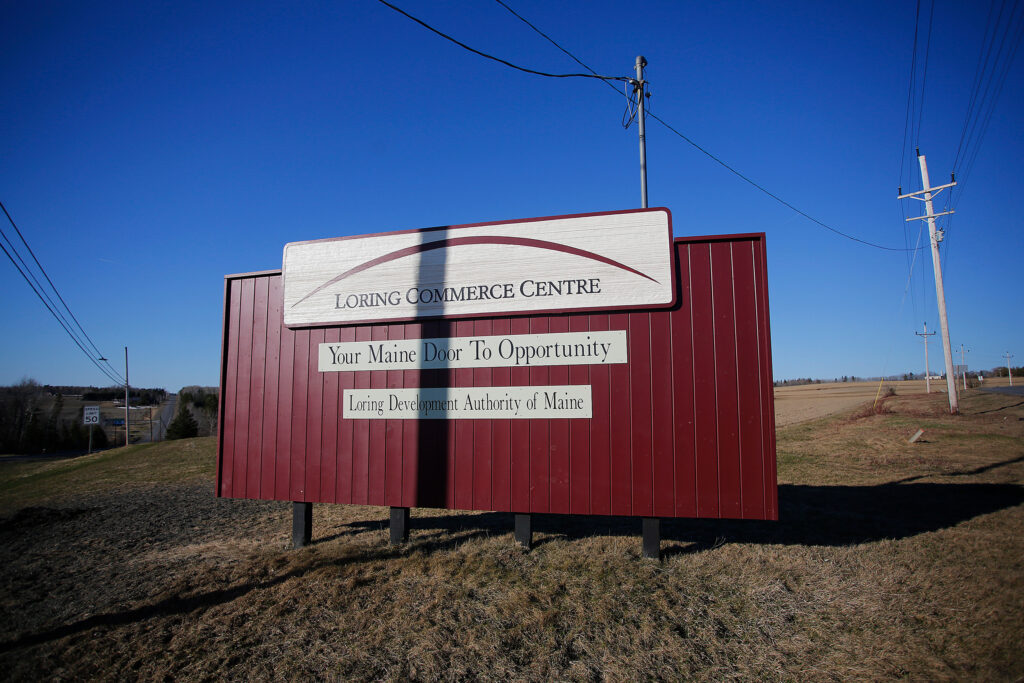BESSEMER, Ala.—They all came here for peace, and so far, the land has given it to them.
For Marshall Killingsworth, the peace comes from the owls whose hoots echo across the valley as he sits in his favorite spot in his garden. For David Havron, it’s looking up at the stars at night as the moonlight glistens off the lake just outside his back door. For Mary Rosenboom, it’s the calls of the songbirds as the sun slowly sets over the hilly terrain. For Becky Morgan, it’s the view of the mountain from her recliner—through the long windows that line the sides of her home.
But all these residents in this area of rural Jefferson County are afraid—fearful that their peace may soon be disturbed.
“Town is moving closer to us,” Jeff Lowe said last week. “And we’re not happy about it.”

Killingsworth, Havron, Rosenboom, Morgan and Lowe are just a few of the residents whose homes are adjacent to a 700-acre, wooded plot of land that soon may be transformed, through years of construction, into a 4.5-million-square-foot data processing center located just within the city limits of Bessemer, Alabama, a city of about 25,000 southwest of Birmingham.
If built to planned capacity, the data center would be one of the largest in the United States and could become one of the largest single consumers of electricity in the state. Of nearly a dozen residents interviewed by Inside Climate News, none expressed support for the project as planned. Instead, all shared fear and frustration over their inability to obtain information about the $14.5 billion proposal from politicians charged with representing the public.
Efforts by Inside Climate News to speak with public officials in Bessemer about the proposal, called Project Marvel, were met with silence. The mayor, his chief of staff and the city’s attorney all signed a non-disclosure agreement with the developer, staffers said, and would not be able to answer questions about the project.
Members of the Bessemer City Council, tasked with approving or rejecting the rezoning necessary for the proposed data center, have repeatedly refused to comment.
“I thought I answered your question,” said Carla Jackson, a council member who represents the area of Bessemer where the data center is planned. “And I was so sweet about it. Right now, while it’s under litigation, I’m not going to talk about it.”
The Details on Data Centers
In the last decade, technological evolution has quickened pace, with massive data centers now in demand for more intensive computational tasks like cryptocurrency mining and processing artificial intelligence (AI) requests. That digital demand, in turn, has made its way into the physical world as tech companies search for cheap land, electricity, water and resources necessary for the development of large data processing centers like the one being proposed in Bessemer.
A data center is like a city with computer servers as the buildings, requiring network cables, power sources and cooling infrastructure, like roads, power lines and sewer networks in a municipality. Data flows like traffic.
Similar to the police and surveillance in a city, a data center also has security infrastructure—electric fences, anti-ram barriers, infrared cameras, alarms, lights and sometimes even guard stations and other surveillance systems to protect against attacks.
As of early 2025, the United States has more than 5,000 data centers, according to industry reports, compared to around 1,000 just five years earlier. And with that increased demand comes an inevitable, increased demand for resources.
Project Marvel
The proposed data center campus in Bessemer, if realized, would consist of 18 buildings, each larger than the average Walmart Supercenter, that would house massive server farms for data storage and processing. Located on about 700 acres of wooded land currently zoned for agricultural use, the proposed physical infrastructure would require the permanent clear-cutting of at least 100 acres of forest.
The company behind the project is a newly created limited liability company, Logistics Land Investments LLC, first formed in May 2023, according to records from the Delaware Secretary of State. The company’s registered agent is not a person, according to business records, but the Corporation Trust Company, also based in Delaware—an entity that has been used by large tech companies like Google and Apple for corporate dealings in the past.


Despite its brief history, Logistics Land Investments has already found itself in at least one legal battle. Court records show that company has been sued by the First Baptist Church of Red Oak, Texas, a place of worship that was located on land the development company was interested in buying for another project. After the sale fell through, the church sued, arguing that the company had wrongly breached their agreement.
The president of Bessemer’s City Council, Donna Thigpen, was the only public official interviewed who confirmed she had not yet signed an NDA. In fact, Thigpen said, she’d been largely left in the dark on the proposed data center thus far.
“We have not met with the builders yet,” she said. “We know nothing about it.”
She referred further questions to the mayor’s office, though she noted he’d signed an NDA.
The mayor’s office did not respond to several requests for comment.
The only information about the project made public so far has been in limited answers from the company’s attorneys to residents’ concerns voiced in planning and zoning meetings held earlier this year.


Those few answers provide only small, fragmented insights into what could be one of the largest capital outlays in recent state history. But even that information is probably more than is legally required to be given to residents, according to arguments made by an attorney for Bessemer in a recent court hearing.
“There’s no provision in the code of Alabama that authorizes the asking of questions, the furnishing of environmental reports or development plans or anything of that nature,” he told a Bessemer judge. “You have a right to be heard as to whether you agree with that ordinance or not. Nothing more, nothing less.”
The city had landed in court after a group of residents filed suit, claiming that property owners weren’t given proper public notice ahead of a recent public hearing on the proposal. Because residents packed the meeting room, the city argued in court, there was no deficiency in public notice.
Monica Agee, a Jefferson County Circuit Judge in the Birmingham division, issued a temporary restraining order on April 14 preventing the Bessemer City Council from voting on the proposed rezoning of the property from agricultural to industrial. After issuing the restraining order, Agee transferred the case to the county’s Bessemer division, where the matter was scheduled for a hearing.


Agee’s temporary restraining order was “wrong and illegal,” attorney Shan Paden, representing the city, told Bessemer judge David Hobdy at an April 23 hearing.
Hobdy scolded the lawyer for his comments about the judge.
“I take issue with the fact that you’re saying that judge knew what she was doing was wrong,” Hobdy said. “That’s a circuit judge of Jefferson County, too, so I think she had appropriate authority to act at her discretion.”
Lawyers for both the residents and the city of Bessemer brought up the size of the project in making their respective arguments about how the judge should eventually rule.
“This is a $14 billion project,” Paden said. “To give you the scope of that, the entire value of all the real estate in the city of Bessmer in 2018 was $345 million dollars,” Paden said in part.
Public officials should be judging the merits of such a project, the lawyer argued, not a judge.
Lawyers for the residents living near the proposed data center site, on the other hand, argued that the size of the project demands robust public notice and close adherence to relevant law.
“This is about protecting property owners’ rights to protect their land from money-grabbing AI developers who have devastated many, many communities across the country,” the residents’ attorney, Reginald McDaniel, said.
John Parker Yates, another attorney for the residents, reminded the judge that the identity of the developer and its potential client is still not known.
“This could be a Chinese data center,” he said. “And that’s scary—that could be happening in our backyard and us not know.”
In the end, Judge Hobdy chose not to dismiss the lawsuit outright as lawyers for the city of Bessemer had asked him to do. Instead, he told both parties that he planned to hold over the case long enough for city officials to begin the public notice process and rezoning process again, in accordance with Alabama law. If and when that process is complete, the judge said, he’d consider ordering a dismissal in the case.
Hobdy set a status update hearing in the case for Aug. 1.
Despite the delay in the necessary rezoning achieved through the residents’ lawsuit, community members opposed to the project now have another, likely more difficult task ahead: to convince public officials to vote against moving the proposal forward.
Marshalling the Troops
Marshall Killingsworth walked in his garden on a recent afternoon, his daylilies blooming in the warm Alabama sun. Killingsworth, 80, retired after working for decades in IT at major companies, including Blue Cross Blue Shield and Drummond Coal. Even in retirement, though, he’s busier now than ever. He spends much of his time outside, tending to an elaborate, well kept yard overlooking a wooded valley where the data center is now proposed to be built.
Soon, Ron and Becky Morgan, married nearly 28 years, came and sat with Killingsworth. Ron, an Army veteran, jumped into the conversation as soon as he arrived, talking intensely about potential noise, light pollution and the environmental impact of the necessary clear-cutting and construction. Becky placed her arm on Ron’s leg. “We just got here,” she said, laughing. “Other people want to talk too.”


“You Can’t Turn It Off Like AC”
In Alabama, almost all the new electric demand that the state’s largest energy company, Alabama Power, has projected is for data centers, said Daniel Tait, executive director of Energy Alabama, a nonprofit organization that advocates for clean energy in the state. Many data centers use alternative energy sources, including solar, wind, nuclear and hydrogen, to reduce carbon emissions and reduce their reliance on the electric grid, although investors in the Bessemer project have not outlined any such plans.
Lawyers representing Logistics Land Investments did not respond to requests for comment.
As demand for digital content grows, an “arms race” has escalated between tech giants to build digital warehouses and bring their services to market first. Data centers were initially smaller and demanded 50 to 200 megawatts of power to run. Driven by the development of AI, a new, second round of data centers uses five times more energy, averaging 2 to 3 gigawatts to sustain operations. They are considered “high capacity” because once the center is running, it doesn’t stop.
“You can’t turn it off like the AC,” Tait said.
If built to full capacity, the Bessemer data center campus is projected to consume around 1,200 megawatts of energy and could feasibly consume around 10.5 million megawatt hours per year. That’s more than 90 times the amount of energy used by all residences in Bessemer and more than 10 times the amount of energy used by all residences in Birmingham annually.


Increased demand for energy, or at least the potential for it, is already driving Alabama Power’s desire to double down on fossil fuel investments. The company, an effective monopoly, has asked the state’s Public Service Commission to approve its purchase of a gas-powered power plant in recent days, potentially exacerbating the state’s reliance on dirty energy that contributes to climate change.
When a technology company proposes to a municipality to build a new digital storehouse, however, sometimes “elevated demand load is overstated because every party is financially invested in overstating the need,” Tait said.
Even as the city moves forward with its plans, for example, there is no guarantee the data center will have customers once built.
Jefferson Traywick serves as Jefferson County’s first ever economic development advisor. In an interview, he said that there are multiple potential customers engaging with investors about potential end use. Traywick said he’d signed an NDA as well, so he couldn’t say who those possible customers might be.
“I really don’t even know,” he said.
Ideally, data center companies should pay for their own infrastructure, but in practice, this often doesn’t happen, Tait said. The vast majority of these infrastructure projects benefit only the data center, not the broader customer base.
Tait believes building these operations “should not be on the backs of regular people to benefit the wealthiest corporations in America.” These corporations, he said, “should pay their fair share. If anything, they should pay more than their fair share.”
Brenda Small and her daughter, Brianna, live in a small trailer park just outside the boundaries of the proposed development. Last month, they were quick to express their opposition to the project. Small said her power bills are already approaching $500 some months.
“That’s ridiculous for one month,” she said. Small worries her bills will soar even higher because of increased energy demand from the data center.


In Georgia, tech companies and consumer advocates have negotiated and agreed that the data center operators cover their own infrastructure costs rather than passing those expenses entirely to consumers. Georgia has also been more forward-thinking about clean energy, Tait said. But Mississippi’s approach to cost allocation is a “free for all.” Last year, Mississippi passed a state law that declares anything Amazon needs to build is automatically in the public interest, with no Public Service Commission review. This approach is “the most egregious example we see in terms of a cost allocation problem,” Tait said.
Alabama law contains tax carve outs for capital projects, including a specific, 30-year tax abatement meant to attract large data centers. If approved by Bessemer officials, a tax abatement under the economic development law could amount to a tax cut of more than $500 million.
Not a Drop To Drink?
So-called “hyperscale” data centers like those used by Google, Meta and other large tech companies can consume hundreds of gallons of water daily and millions annually. Smaller centers often use less than 100,000 gallons daily but can still consume a significant amount of a town’s water supply if not properly managed.
To cool heat generated by thousands of servers in one data center, a chilled water system is typical for a hyperscale data center. The central chiller cools the water, circulates it through heat-absorbing coils, and dissipates the heat into the air through a cooling tower. The water then recirculates. In smaller centers, water can be piped to nearby wastewater facilities.
Lawyers for Logistic Land Investments have said in documents that the proposed Bessemer facility’s end user may choose to rely on a so-called “closed loop” cooling system meant to reduce water usage and waste, but it’s unclear exactly how that system will work—what the water demand will be and where wastewater would be discharged.
Despite the rapid construction of new data centers driven by the demand for AI, cryptocurrency mining and cloud computing, Alabama lacks a comprehensive water plan. Under state law, if you own land next to a river or stream in Alabama, you can use the water without a permit. Businesses using more than 100,000 gallons of water daily are required to file a certificate and declare the water usage as beneficial, but the reporting is largely self-regulated without meaningful oversight, and penalties are nonexistent for non-compliance, according to Cindy Lowry, executive director of Alabama Rivers Alliance.
Most states in the east have a regulated water withdrawal system, she said. Alabama does not. “We have virtually nothing,” said Lowry.
If different sources pull from one river, like the Black Warrior River, and everyone is filling out a certificate, “There’s nobody looking to say: ‘How much can the system handle? How many straws are in the system?’” Lowry said.
By consuming large amounts of water, a data center, like the one proposed in western Jefferson County, has the potential to become the largest water consumer in the state. Already, 80 percent of water withdrawals in the state are for cooling coal, gas and nuclear plants, Lowry added.
Often, utilities may not have initially planned for such massive water demands. With their high water consumption for cooling systems, data centers pose several significant water challenges for Alabama.
A data center can strain local water utilities capacity, increase water bills for existing customers, disrupt the natural flow of rivers, reduce the water available for downstream users and potentially destroy local ecosystems.
Dynamics like these worry Ron and Becky Morgan. The couple is among the few residents in the area on well water, Becky explained, putting them at risk of becoming victims of groundwater contamination—water used to cool data centers is mixed with chemical coolants—or more general water scarcity. “We’re on the front lines when it comes to water,” she said.
This story is funded by readers like you.
Our nonprofit newsroom provides award-winning climate coverage free of charge and advertising. We rely on donations from readers like you to keep going. Please donate now to support our work.
Donate Now
Jeff Lowe, a retired firefighter, said he worries about the impact the facility will have on the ability of first responders to adequately address fires in the area.
“They say Warrior River is going to supply it,” Lowe said of the local water utility. “But I don’t know if they can. They can’t even keep the fire hydrants around here going.”
Lowe said he also wonders about the additional fire risk posed by the data center itself, potentially replete with electronic equipment and lithium batteries, in a community with limited resources to respond to large, industrial fires.
“I just don’t know if they have the resources to deal with something like that before it gets out of hand,” he said.
The Loss of the Land
On the whole, residents fear perpetual daylight will replace starlight and the 24-hour mechanical whir of machinery will be their surround sound, drowning out the birdsong. They foresee the banks of Little Blue Creek and other wetlands being deforested, the lakes flooded with potentially toxic runoff laced with coolants and wildlife driven from their habitat.
David Havron, president of the Rock Mountain Lakes Landowners Association, is one of the residents who filed suit against the city, resulting in the restraining order that delayed the city council’s vote to move the project forward.


He worries that the nighttime view from his dock, just a stone’s throw from his back door, will soon be ruined in favor of a project that he believes will provide little benefit to his neighborhood or those living in it.
“It’s going to look like a sunset,” he said of the light pollution. “A constant haze in the sky.”
With less vegetation to absorb rainwater because of the clear-cutting necessary to complete the project, Havron said residents are worried flooding could become worse in the area, with runoff potentially filling the lakes around which many of the residents have built their homes and lives.




Then, there’s the risk to wildlife.
“It’ll all be gone,” Havron said. “It’ll run off. There’s a set of bald eagles. There’s deer and coyotes, racoons and turkeys and everything else here. It’ll all be gone … It’s going to have to be cut.”
“We’re Going to Fight”
Not long after Ron and Becky Morgan had arrived at Marshall Killingsworth’s garden gathering, Mary Rosenboom came and sat down among the daylilies, completing the circle of neighbors brought together by the fight to save their community from an unwanted development.
A sales professional, Rosenboom said she’d never delved into political or environmental issues until the data center came knocking at the community’s door. Once she began to look into the potential impacts, she quickly realized this was a fight she was willing to join and, if necessary, help lead. Now, she’s become an accidental activist.
“It was absolutely an accident, but here I am,” she said.


Sitting in front of her was a brightly colored binder, filled with research on data centers, city governance and what the impact could be in her community.
It’s a hard fight to win, Rosenboom said, when there’s so little information being provided about the specifics of the project.
The non-disclosure agreements, the residents said, was one of their top concerns.
“When you’re dealing with public funds and public ordinances, there should be no NDA,” Ron Morgan said.
Even if public officials are unwilling to talk about the possible impacts of the project, the residents around the site say they’re ready for a war. Securing the restraining order and delaying the process was a battle won, they said, but the fight is still well underway.
Becky Morgan, also a plaintiff in the suit against the city, said that previous public hearings have been largely a formality, with officials doing little to meaningfully engage with citizens’ concerns.
“It’s just a farce,” she said.
And when it came time for officials to ask questions of the developer, there was little desire on the part of public officials to push the data center representatives for more substantive information.
“They already had their marching orders,” her husband, Ron, said. “And now we have ours.”
The next stage of the fight is already underway.
The last week of April, more than 100 residents gathered inside Rock Mountain Baptist Church to hear from lawyers McDaniel and Yates about what may come next.


Attorneys John Parker Yates and Reginald McDaniel speak with residents about what comes next in their fight against a proposed data center. Credit: Lee Hedgepeth/Inside Climate News
The pair characterized securing a delay in the rezoning process as a win but warned residents that a protracted legal fight could drag on for years and cost the community upwards of six figures.
Outside the legal realm, the lawyers said, residents should do all they can to press local political leaders to oppose the project and provide as much information about the proposal as possible before and during newly scheduled planning and zoning commission and city council meetings in the coming weeks.
No matter what, the lawyers told the crowd, fighting a municipality with practically unlimited resources over a multi-billion dollar project will be an uphill battle.
It was a reality many of the residents were already coming to terms with. They were ready for the fight.
About This Story
Perhaps you noticed: This story, like all the news we publish, is free to read. That’s because Inside Climate News is a 501c3 nonprofit organization. We do not charge a subscription fee, lock our news behind a paywall, or clutter our website with ads. We make our news on climate and the environment freely available to you and anyone who wants it.
That’s not all. We also share our news for free with scores of other media organizations around the country. Many of them can’t afford to do environmental journalism of their own. We’ve built bureaus from coast to coast to report local stories, collaborate with local newsrooms and co-publish articles so that this vital work is shared as widely as possible.
Two of us launched ICN in 2007. Six years later we earned a Pulitzer Prize for National Reporting, and now we run the oldest and largest dedicated climate newsroom in the nation. We tell the story in all its complexity. We hold polluters accountable. We expose environmental injustice. We debunk misinformation. We scrutinize solutions and inspire action.
Donations from readers like you fund every aspect of what we do. If you don’t already, will you support our ongoing work, our reporting on the biggest crisis facing our planet, and help us reach even more readers in more places?
Please take a moment to make a tax-deductible donation. Every one of them makes a difference.
Thank you,



















